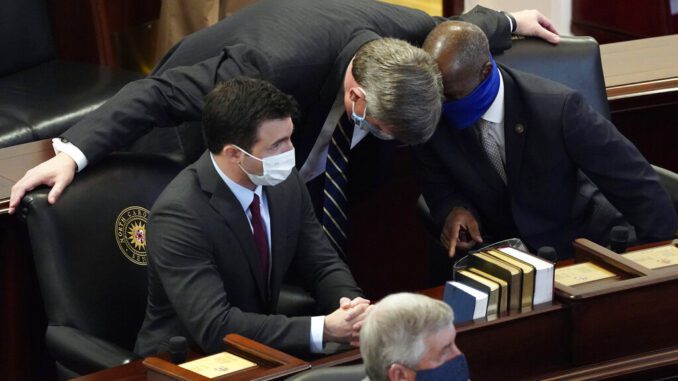
North Carolina’s history of drawing congressional and legislative districts is challenging to defend for both political parties.

Political opportunism and warfare come with the “big pen” when drawing these critical maps, and there is always outrage for those not at the table.
Look no further than when Former Republican Co-Speaker of the House Richard Morgan waged war on his enemies when he and Democrat Co-Speaker Jim Black were in power. Under their maps, Speakers Morgan and Black punished Johnston County Republicans Leo Daughtry and Billy Creech for the controversial caucus leadership vote in 2003. At the same time, there were three other cases of the double-bunking strategy by placing incumbents in the same districts. They include Republican juggernauts such as Robert Pittenger, Bob Rucho, and Virginia Foxx.
Fast forward a few years to when Republicans won supermajorities in both the NC House and Senate, these congressional and state legislative maps had to be redrawn multiple times due to the loss of state and federal court battles. Both sides have taken advantage of the “big pen” by double-bunking incumbents and targeting voting blocs by placing too many specific blocs into districts.
Looking to the past to learn from the mistakes of previous leaders and court battles; Leaders in both parties can be proud of themselves for the way the process succeeded in the 2019 legislative redraw. This groundbreaking model allowed public comment about suggested maps in committee and was drawn in the light of day for all to see. That means that it took out the backroom deals and drawing of political maps in the basement for only a few to know until it was time to vote.
In a joint statement about the process in 2019, Senate Democratic Leader Dan Blue and senior Republican leaders stated, “This is the most transparent redistricting process in history. The maps produced in this room in the last several days are fair and nonpartisan.”
Some lawmakers, on the other hand, have called for independent redistricting commissions throughout the years. The most recent is state Sen. Jeff Jackson (D-Mecklenburg). He states, “It’s pretty clear how to solve this problem at this point.”
Sen. Jackson’s proposal is a solution searching for a problem. His caucus leader said the process used in 2019 was “the most transparent redistricting process in history.” He also stated that it is “indefensible to allow the rigging of elections.” What was rigged in North Carolina’s 2020 elections? Is he spreading North Carolina’s version of “the big lie”?
We do not need more posturing and grandstanding. By placing your hopes in a commission made up of unelected and unaccountable bureaucrats, you are abdicating your responsibilities as an elected official. We do not need to place our faith and power in a group of unelected bureaucrats that are the end-all, be-all.
Moving forward, we should seek to hold our elected officials accountable for solutions to problems and not give in to those who want to politicize issues. The 2019 redistricting process is an example to legislative bodies across the United States that in North Carolina, we will continue to be solution-based to solve our issues. We do not “punt” tough decisions to unelected, unaccountable bureaucrats. Instead, we embrace the challenge and expect our elected leaders to perform their duties. The 2019 process is an example that it can be done. Let’s continue down that path.
Luke Stancil is a North Carolina-based political strategist. He has worked in the United States House of Representatives, Governor’s Office, and the General Assembly.



